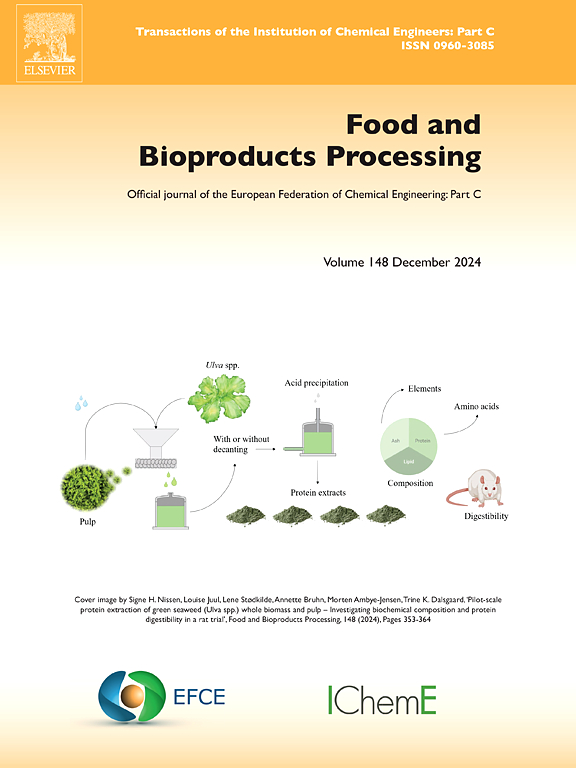From characterisation to strategy: A comprehensive review of fouling in dairy ultrafiltration and microfiltration
IF 3.4
2区 农林科学
Q2 BIOTECHNOLOGY & APPLIED MICROBIOLOGY
引用次数: 0
Abstract
Membrane-based separation technologies like ultrafiltration (UF) and microfiltration (MF) are widely used for concentrating and separating proteins and other milk components. Despite significant advancements, fouling remains a major challenge, increasing operational costs, processing time, and energy consumption. This review thoroughly examines fouling characterisation in milk UF and MF processes, focusing on the interplay between membrane properties, operating conditions and solution properties. The review highlights the critical need for effective fouling mitigation strategies. It provides an in-depth analysis of fouling properties, factors influencing filtration, and advanced techniques for characterisation. The discussion also addresses the optimisation of cleaning procedures, emphasising the importance of understanding the chemical and morphological characteristics of fouling to develop tailored cleaning protocols. Such customised approaches can result in reduced standard cleaning sequences, leading to the conservation of water and chemicals. The review suggests future research directions, emphasising the importance of collaboration between dairy processors and cleaning agent suppliers to enhance cleaning strategies. It highlights the necessity of employing multiple analytical techniques to comprehensively understand fouling, linking it with filtration performance data from real processes.
从表征到策略:乳制品超滤和微滤中污染的综合综述
超滤(UF)和微滤(MF)等膜分离技术被广泛用于浓缩和分离蛋白质及其他牛奶成分。尽管取得了重大进展,但污垢仍然是一项重大挑战,会增加运行成本、处理时间和能耗。本综述深入研究了牛奶超滤和中滤过程中的污垢特征,重点关注膜特性、操作条件和溶液特性之间的相互作用。综述强调了对有效污垢缓解战略的迫切需要。它深入分析了污垢特性、影响过滤的因素和先进的表征技术。讨论还涉及清洁程序的优化,强调了了解污垢的化学和形态特征以制定定制清洁方案的重要性。这种定制方法可以减少标准清洗顺序,从而节约用水和化学品。综述提出了未来的研究方向,强调了乳制品加工商与清洗剂供应商合作以加强清洗策略的重要性。它强调了采用多种分析技术全面了解污垢的必要性,并将其与实际工艺中的过滤性能数据联系起来。
本文章由计算机程序翻译,如有差异,请以英文原文为准。
求助全文
约1分钟内获得全文
求助全文
来源期刊

Food and Bioproducts Processing
工程技术-工程:化工
CiteScore
9.70
自引率
4.30%
发文量
115
审稿时长
24 days
期刊介绍:
Official Journal of the European Federation of Chemical Engineering:
Part C
FBP aims to be the principal international journal for publication of high quality, original papers in the branches of engineering and science dedicated to the safe processing of biological products. It is the only journal to exploit the synergy between biotechnology, bioprocessing and food engineering.
Papers showing how research results can be used in engineering design, and accounts of experimental or theoretical research work bringing new perspectives to established principles, highlighting unsolved problems or indicating directions for future research, are particularly welcome. Contributions that deal with new developments in equipment or processes and that can be given quantitative expression are encouraged. The journal is especially interested in papers that extend the boundaries of food and bioproducts processing.
The journal has a strong emphasis on the interface between engineering and food or bioproducts. Papers that are not likely to be published are those:
• Primarily concerned with food formulation
• That use experimental design techniques to obtain response surfaces but gain little insight from them
• That are empirical and ignore established mechanistic models, e.g., empirical drying curves
• That are primarily concerned about sensory evaluation and colour
• Concern the extraction, encapsulation and/or antioxidant activity of a specific biological material without providing insight that could be applied to a similar but different material,
• Containing only chemical analyses of biological materials.
 求助内容:
求助内容: 应助结果提醒方式:
应助结果提醒方式:


